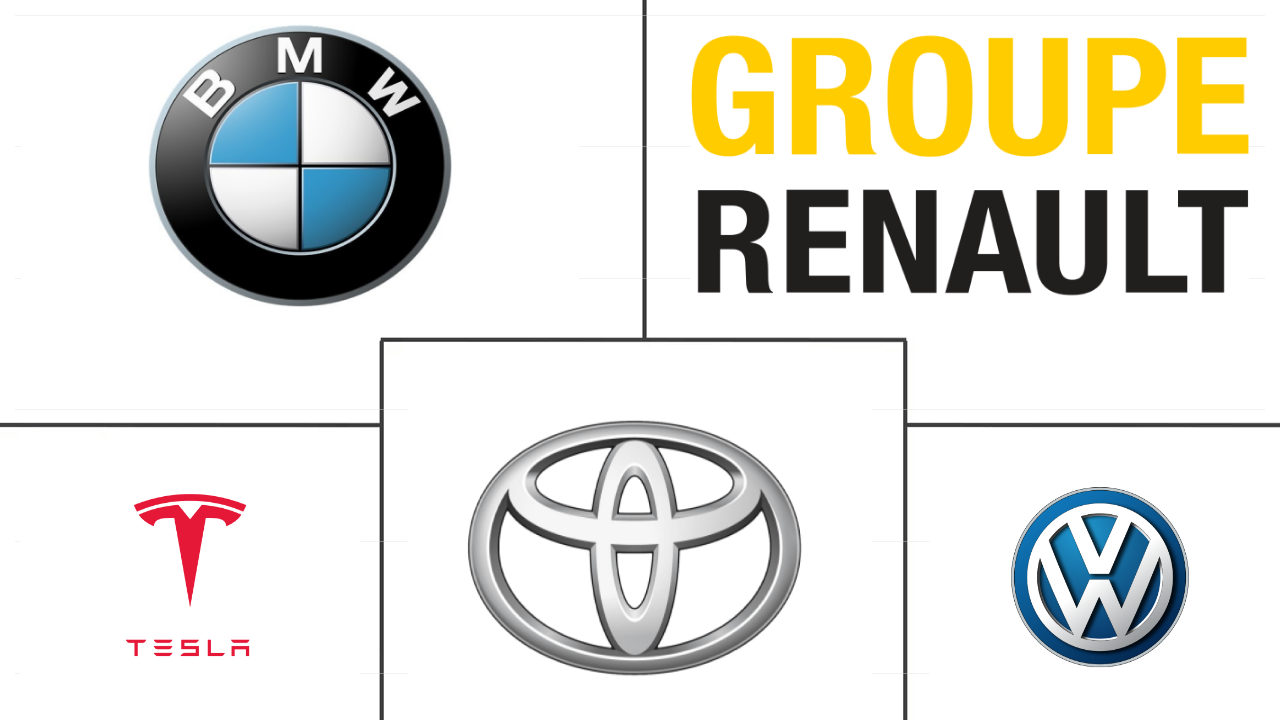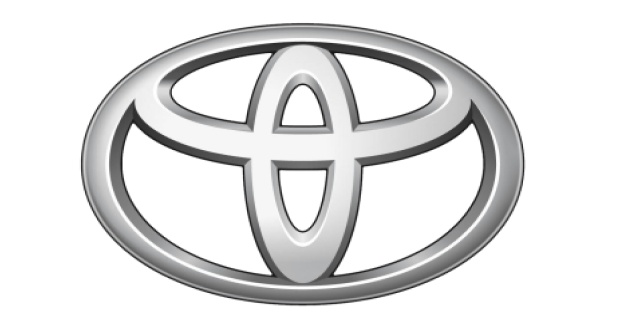Market Size of europe electric vehicle Industry
| Icons | Lable | Value |
|---|---|---|
|
|
Study Period | 2017 - 2030 |
|
|
Market Size (2024) | USD 261.1 Billion |
|
|
Market Size (2030) | USD 743.1 Billion |
|
|
CAGR (2024 - 2030) | 19.04 % |
|
|
Largest Share by Country | Germany |
|
|
Market Concentration | Medium |
Major Players |
||

|
||
|
*Disclaimer: Major Players sorted in no particular order |
Europe Electric Vehicle Market Analysis
The Europe Electric Vehicle Market size is estimated at 261.1 billion USD in 2024, and is expected to reach 743.1 billion USD by 2030, growing at a CAGR of 19.04% during the forecast period (2024-2030).
261.1 Billion
Market Size in 2024 (USD)
743.1 Billion
Market Size in 2030 (USD)
40.56 %
CAGR (2017-2023)
19.04 %
CAGR (2024-2030)
Largest Segment by Fuel Category
46.22 %
value share, BEV, 2023
BEVs dominate due to significant government support, extensive charging infrastructure, and increasing consumer preference for zero-emission vehicles across Europe.
Largest Country
27.92 %
value share, Germany, 2023

Germany leads the European electric vehicle market due to its strong automotive industry, extensive charging network, and high consumer demand for electric vehicles.
Largest Segment by Vehicle Body Type
66.92 %
value share, Sports Utility Vehicle, 2023
SUVs dominate due to their versatility, high demand from businesses, and suitability for various commercial applications.
Fastest-growing Segment by Fuel Category
31.45 %
Projected CAGR, FCEV, 2024-2030
FCEVs are growing rapidly due to advancements in hydrogen technology, expanding hydrogen refueling infrastructure, and strong support for zero-emission vehicles.
Leading Market Player
13.65 %
market share, Toyota Motor Corporation, 2023

Toyota Motor Corporation dominates the market with its advanced electric vehicle technology, extensive R&D investments, and strong focus on providing eco-friendly mobility solutions across Europe.
The growing logistics, supply chain, infrastructure, and construction sectors and the rise in public transportation services are bolstering the European EV market
- The demand for commercial vehicles is set to witness a significant uptick in the coming years. Key drivers of this growth include the logistics, supply chain, infrastructure, and construction sectors. Additionally, a rise in public transportation services is bolstering the demand for buses. However, the sales of commercial vehicles experienced a downturn in 2020, largely due to the impact of the pandemic. The market swiftly rebounded in 2021, with Europe's Climate Plan playing a pivotal role. As Europe aims to ban diesel-powered vehicles by 2030, a notable shift is expected to be witnessed among business consumers toward electric commercial vehicles.
- Across Europe, the introduction of new products and strategic collaborations, such as the partnership between Hyundai Motor Company and H2 Energy, are poised to drive sales of electric trucks. This collaboration produced Hyundai Hydrogen Mobility (HHM) in September 2019 with a vision to foster a green hydrogen ecosystem in Switzerland and Europe. HHM has set an ambitious target of introducing 1,600 fuel-cell electric heavy-duty trucks by 2025. Such initiatives are expected to fuel the sales of heavy electric trucks in Europe from 2024 to 2030.
- In 2021, the number of electric buses in Germany's public transport sector nearly doubled, with new registrations surging by 60% to reach 1,269, up from 689 in the previous year. Of these, 586 were battery electric vehicles, while only a handful was fuel cell-powered or utilized other technologies. Furthermore, both local transport companies and government bodies in Germany have plans to add over 3,000 e-buses by 2025. Similar trends in other European nations are poised to propel the overall commercial vehicle market in Europe from 2024 to 2030.
The European electric vehicle market is characterized by country-level variations, reflecting differing incentives, infrastructure, and consumer preferences
- Europe is one of the largest electric vehicle manufacturers globally. It is one of the regions globally with the fastest adoption of electric mobility. In terms of electric vehicles, sales of electric passenger cars accounted for the largest share of 8.3% of all newly registered cars in 2023, which were fully electric across the region. Gasoline-powered vehicles are expected to be banned by 2030 and 2035 in most countries, providing a boost to the sales of electric vehicles.
- The launch of new products and the entry of new brands are expected to drive the market for passenger cars in Europe. In February 2022, the Chinese automaker Xpeng entered Sweden's electric passenger cars with its debut electric cars, P7 and P5 sedans. In June 2022, the American automaker Ford announced that it would produce and sell only electric cars in Europe by 2030. The company plans to invest USD 11.4 billion in producing an electric car at a manufacturing plant in Valencia, Spain.
- Various government efforts in terms of rebates and subsidies are increasing the adoption of electric vehicles in various European countries. For instance, in 2023, a subsidy of EUR 2,950 was made eligible for new battery electric cars and a subsidy of around EUR 2,000 for used battery electric cars. However, the price of the vehicles should be a minimum of EUR 12,000 and a maximum of EUR 45,000. Such advantages attract customer attention to these vehicles, which is expected to enhance the demand for various types of electric vehicles from 2024 to 2030 in European countries.

